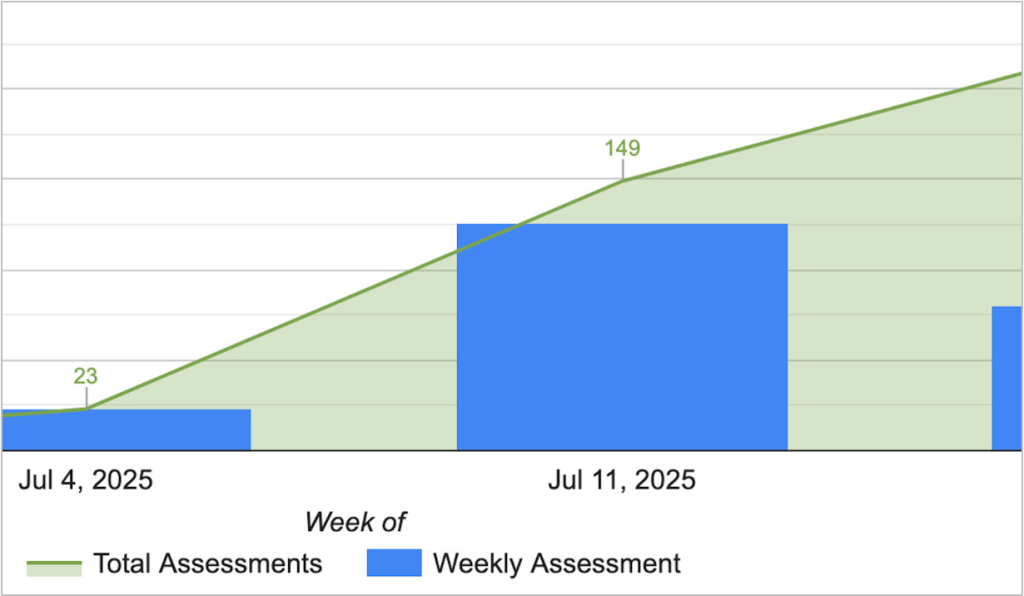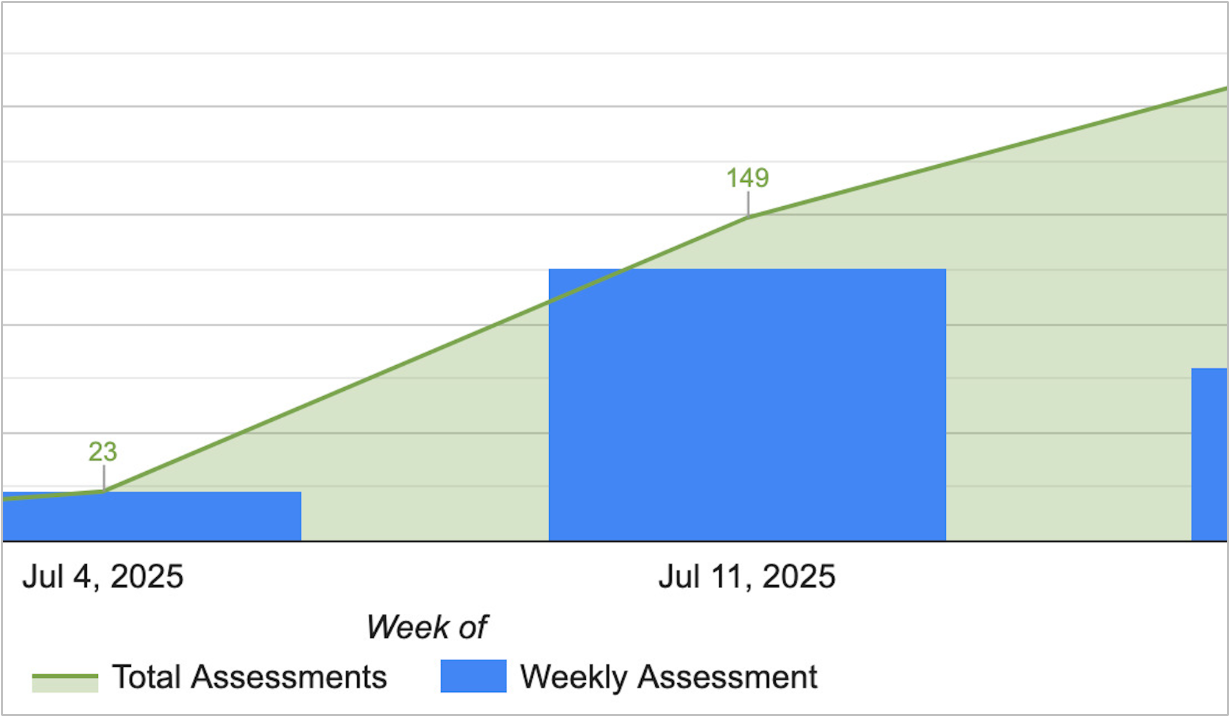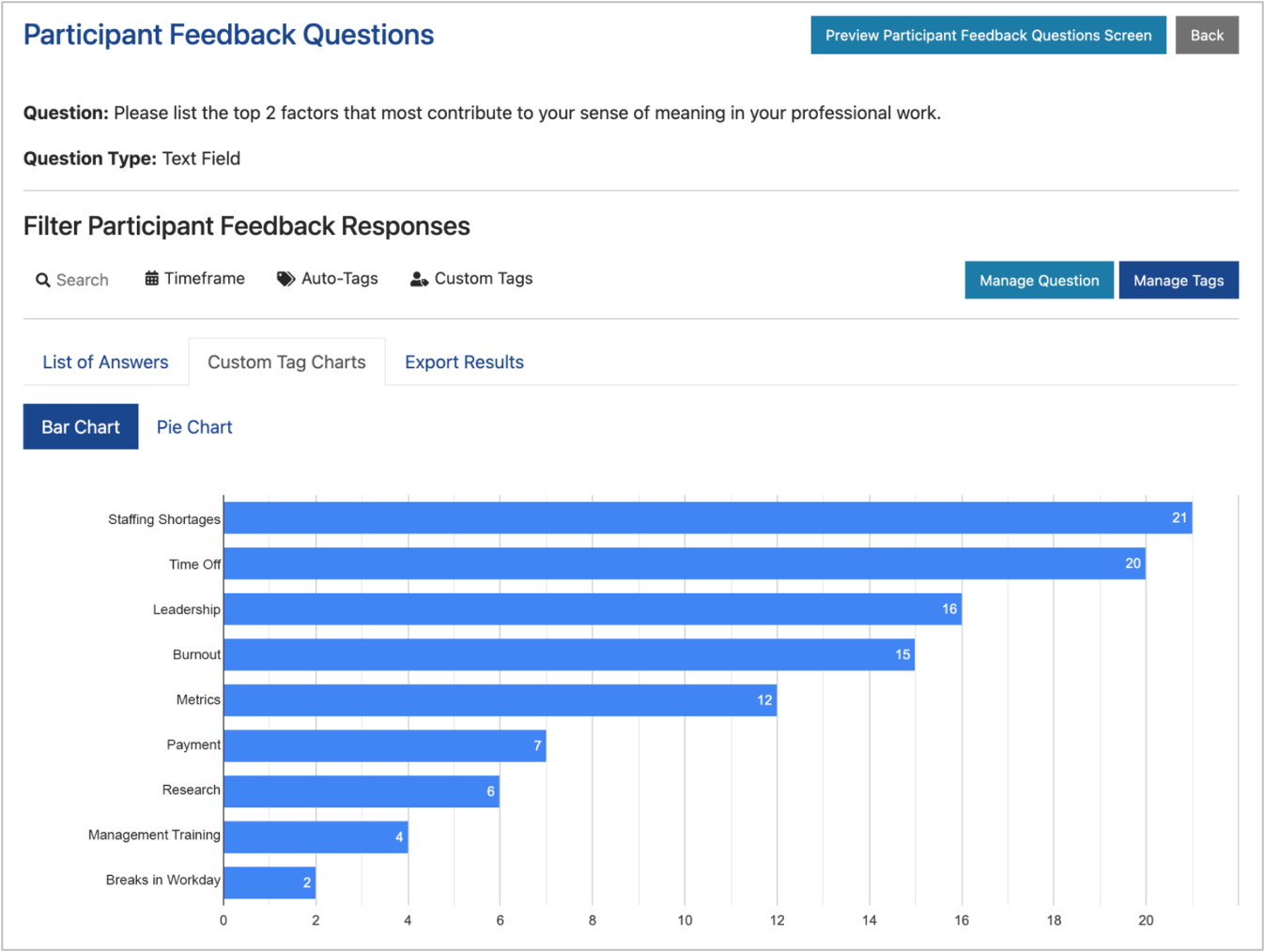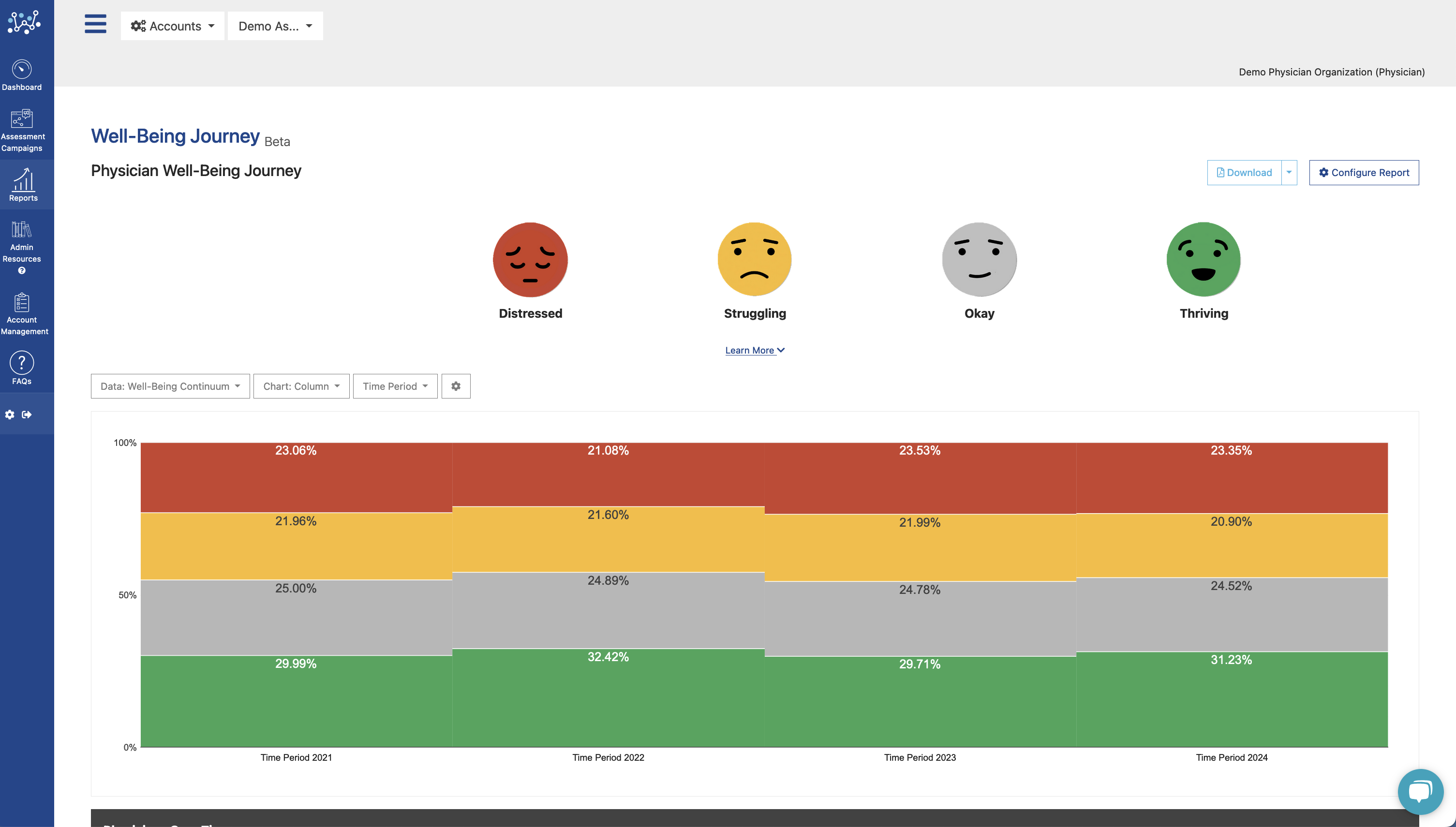It’s one of the most common questions we hear from Well-Being Index clients:
“What’s a good engagement rate for a well-being assessment?”
While there’s no one-size-fits-all answer, it’s a critical question—and one that deserves more than a benchmark percentage.
Let’s break it down.
What Impacts Engagement in a Well-Being Assessment?
When someone receives a request to complete a well-being survey or assessment, their likelihood to respond hinges on more than just the ask itself. Many factors can influence participation, including:
Who is making the request (a peer, manager, department leader?)
Why it matters (are participants getting something out of it?)
How it’s framed (tone, transparency, and trust all play a role)
When it lands (do they feel like they have the time to respond?)
What follow-up or encouragement they receive
That’s why we don’t look at well-being engagement through a rigid success metric. Instead, we focus on something more powerful: actionable insights.
How Does the Well-Being Index Track Engagement?
The Well-Being Index is built for proactive champions of organizational well-being—and we give you the tools to track and support engagement in real time.
Our Assessment Campaign Manager lets you:
Monitor assessment participation week-by-week
Drill down into engagement by location, role, or group
Celebrate strong participation with individual departments
Partner with local leaders to drive higher engagement where needed
Whether you’re a wellness champion, program director, or HR leader, this tool gives you the visibility to support participation and make sure your outreach efforts are targeted and timely.
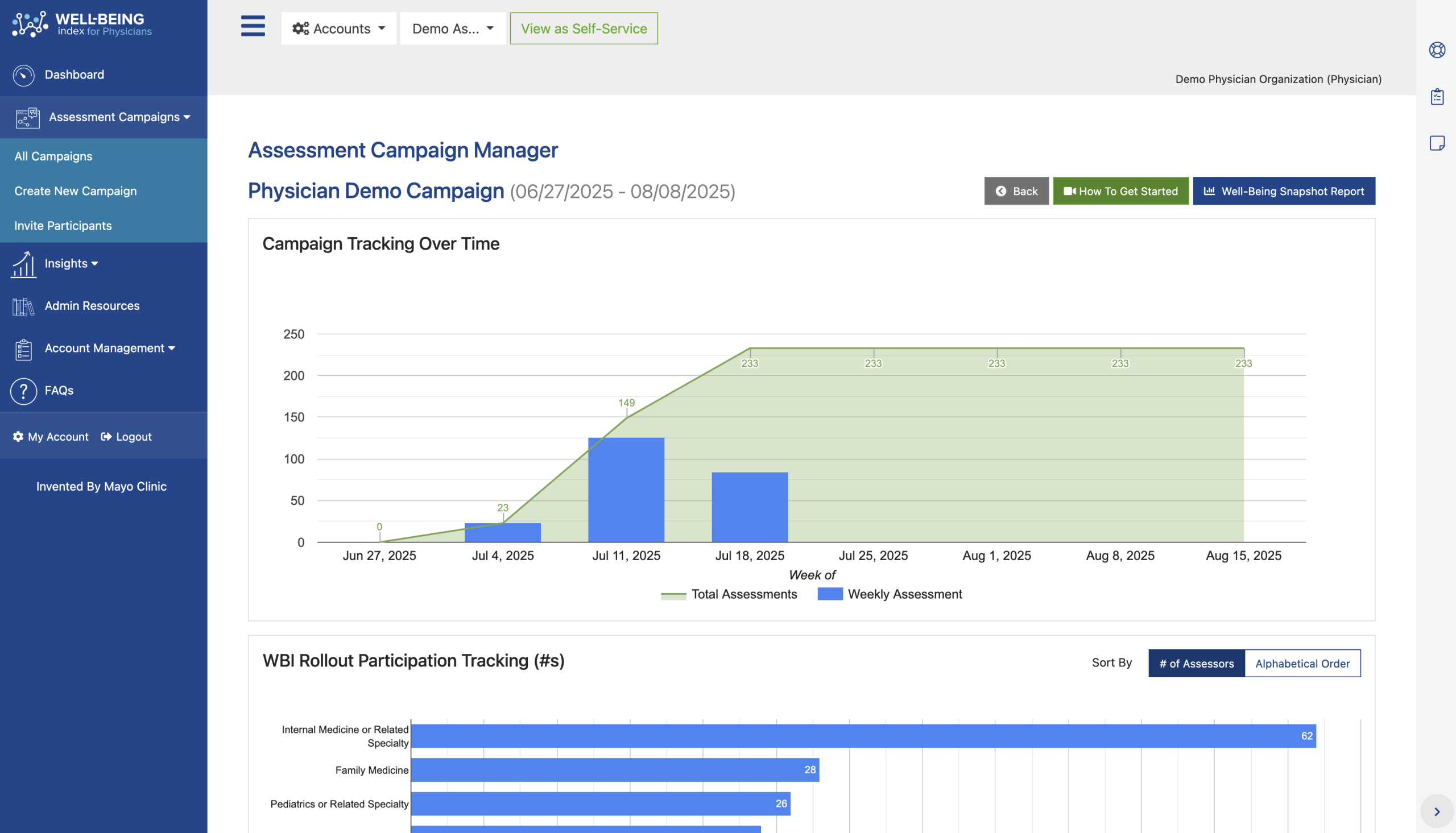
What Is “Good” Engagement?
We define “good” not by a percentage, but by impact.
Good engagement is participation that generates meaningful insight—and that insight leads to meaningful action.
With the Well-Being Index, you don’t need a perfect response rate to uncover actionable trends, risks, and opportunities. You just need to start where you are and let the data guide you forward.
Meaningful Insights—Even with Modest Participation
Historically, well-being reporting relied on the Mean Distress Score, a valuable metric that helps organizations understand how their teams compare to national benchmarks. But many organizations were left wondering:
“Is this sample size meaningful?”
Here’s the truth: Focusing only on averages can limit your visibility—and your impact.
That’s why the Well-Being Index introduced the Well-Being Snapshot, a report that visualizes assessment results across the full well-being continuum:
Distressed
Struggling
Okay
Thriving
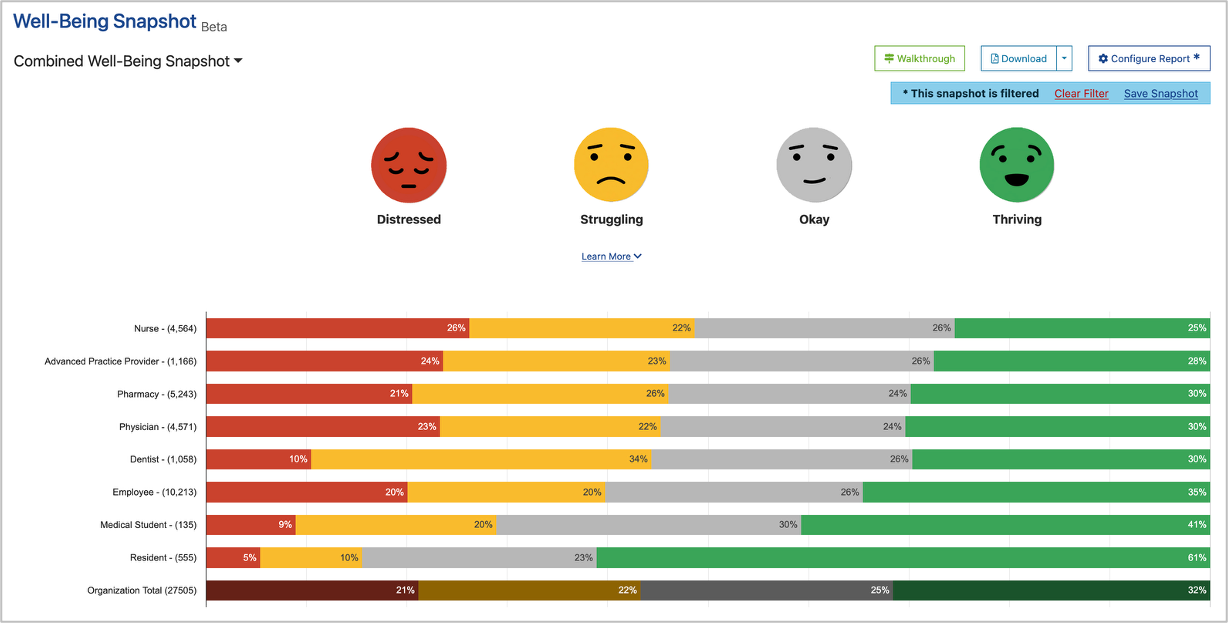
This shift from averages to distribution provides a more holistic picture of your people’s well-being. A group’s mean score might suggest they’re doing “okay,” but that same group could include both highly distressed and highly thriving individuals—averaging out to the middle.
The Well-Being Snapshot ensures no one is hidden in the average.
And it offers life-saving insights, particularly for those in the Distressed category, who face elevated risks for:
- Burnout
Severe fatigue
Suicidal ideation
Medical errors
Job dissatisfaction and attrition
If even one individual is showing signs of high distress, the data can help leaders intervene with targeted support.
Real Data, Real People, Real Impact
Well-being data isn’t just a dashboard. It’s a reflection of the real people behind the numbers.
That’s why we believe even limited participation can yield meaningful insight, especially when you’re equipped with the right tools to interpret and act on it.
The next time you’re reviewing well-being assessment data, we encourage you to shift the focus away from “Was this enough data?” and instead ask:
“What did this data reveal—and how can we respond in a meaningful way?”
Because the people who took the time to participate are already showing you where to start.
Looking to boost or better interpret your assessment engagement?
Our team can help you uncover what your engagement rates mean—and how to improve them. Talk to us about strategies tailored to your team.

